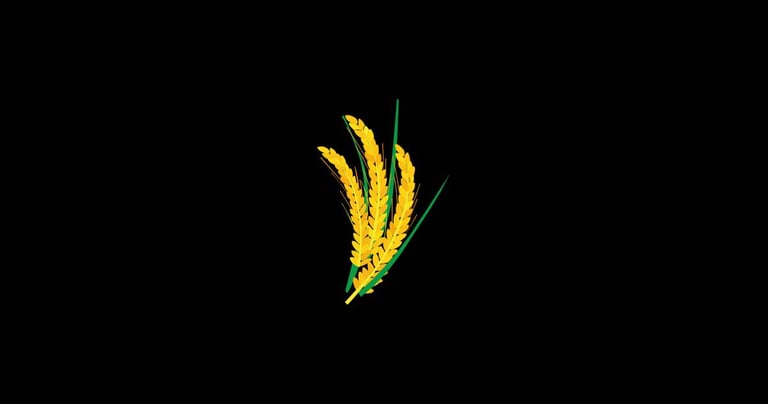11 Facts About Wheat
Explore 11 fascinating facts about wheat that will help you understand why this common crop is so important to the world's food supply and how it affects our daily life.
FACTS ABOUT


wheat barley (credit: pixabay)
Wheat frequently goes unnoticed in our daily lives, concealed in bread, spaghetti, cereals, as well as makeup. However, you are not by yourself if you have ever been overtaken by dietary obsessions like sprouted flours, ancient grains, and gluten-free. Uncertain whether I was starting a science project or baking, I suddenly stood motionless in a shopping section, looking at seven varieties of wheat flour. We often forget that wheat has a rich and interesting heritage and a complicated nature that has practically influenced entire cultures. Wheat is more than simply a grain; it is a tale of invention, adaptations, and perseverance from ancient agriculture to space stations. We are going to examine 11 unexpected facts that demonstrate wheat demands somewhat greater spotlight on our plates and in our thoughts.
Wheat Has Over 25,000 Varieties: Twenty-five thousand, indeed. Only a handful, such as bread wheat or durum that makes pasta, are known to the majority of us, but farmers worldwide cultivate thousands of types that are appropriate for regional soils, weather conditions, and cultures. Every variety has distinct qualities, ranging from levels of protein to disease resistance. Wheat is a genetically diverse crop that is not a one-size-fits-all crop.
Wheat Can Grow in Space: NASA grows their own bread instead of packing it for long-haul flights. In order to evaluate alternative sources of nourishment for upcoming Mars expeditions, wheat has been grown on board the ISS. Scientists can better figure out how plants adjust to closed-loop structures and microgravity conditions thanks to the controlled environment research. Thus, it is possible that wheat could be consumed by the first mankind on a different planet.
Wheat is Self-Pollinating: Wheat does not require wind or bees for pollination, as as opposed to apples or melons. The majority of wheat varieties self-pollinate, providing farmers with more consistent harvests. Because of its sustainability, wheat may grow in a wide range of places, from Kazakhstan to Kansas.
Wheat Gluten is a Defense Protein: Gluten is a protein that developed to shield wheat from bugs, not a wicked entity hidden in your sandwich. It is bitter, harsh, and difficult for insects in particular to consume. Although it can lead to health problems for those who have celiac disease or gluten intolerance, however, its primary function was survival rather than damage.
Wheat is a Hexaploid in Bread Form: Yes, bread wheat has six sets of chromosomes, but humans only have two. This is known as hexaploid. Although wheat's complicated genetic makeup results in it being very versatile, it additionally presents difficulties for genetic study and breeding. It is comparable to attempting to rewrite a novel with six different versions of each chapter.
Wheat DNA is 5 Times Larger Than Human DNA: About 17 billion base pairings make up the wheat genome, which is more than five times as many as human DNA. The reason being the fact that wheat has amassed genetic material throughout thousands of years by means of several hybridizations. In a sense, it is the hoarder of plants.
Wheat Can Survive Freezing: Vernalization is a mechanism by which being exposed to cold causes some wheat variations, such as winter wheat, to flower in the spring. This implies that wheat can withstand freezing temperatures and continue to yield an entire crop when sown in the fall. It is nature's method of ensuring that an ideal spring is not necessary for the crop.
Wheat is Grass: According to botany, wheat belongs to the Poaceae family, which also includes bamboo, rice, corn, and lawn grass. The wheat field, that golden one, swaying in the wind? It is a huge, tasty field. It makes sense why it spreads so quickly and occupies whole areas.
Wheat Farming Led to Permanent Settlements: One of the turning points in the history of humanity was the domestication of wheat. In the Fertile Crescent, prehistoric civilizations started growing wheat thousands of years back. In addition to providing a steady supply of nourishment, it paved the way for the establishment of permanent places of residence, villages, and ultimately towns. In essence, civilization as we understand it would not exist without wheat.
Wheat Fields Can Have Microclimates: The temperature and humidity in the area around it can be gently affected by massive wheat fields. Intake of heat and transpiration, or the release of moisture by plants, work together to accomplish this. Farmers have long observed that based on what is being grown, neighbouring places feel somewhat different, warmer, higher in humidity, or less windy.
Wheat Emits VOCs When Stressed: Wheat generates volatile organic compounds (VOCs) when it is under strain, whether from disease, dry conditions, or insects. Similar to emergency outbreaks, these compounds alert adjacent crops to start their own defensive mechanisms. It is the most innovative kind of plant-to-plant interaction.
Bonus Hint For Inquisitive Bakers or Gardeners
Explore possibilities with historical wheat categories if you like baking from the ground up or producing your own food. They link you to generations of agricultural heritage in addition to frequently having better flavours.
Summary: Wheat Deserves More Credit Than it Gets
It is simple to miss an aspect that is constantly present. In addition to generating agricultural transformations and sustaining human civilizations, wheat is now growing in space. It is an agricultural product that nourishes us now, ties us to our heritage, and may even assist us move forward. It is more than simply the flour in your cabinet. A grain that is everything but uninteresting lies beneath that plain dish, so keep it in mind if you have ever experienced feeling like you were merely eating bread or twisting spaghetti.
